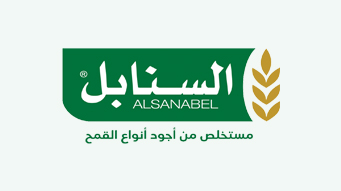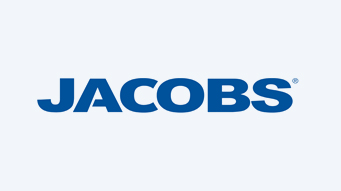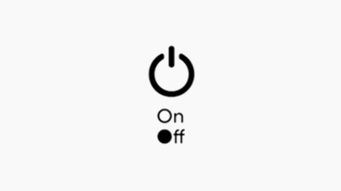
Using reverse osmosis technology in grey water treatment
Reusing wastewater in some applications requires more treatment than others due to the quality of the wastewater. Many standard wastewater treatment systems consist of pretreatment, primary treatment, and secondary treatment stages. By the end of the secondary stage, the majority of contaminants, solids, organics, inorganics, and metals have been removed or reduced. This is where reverse osmosis is best used to treat greywater in a tertiary stage process.
Secondary treatment can provide you with a safe effluent that can be discharged, but it will not meet the criteria for reuse applications. These reuse applications may include the following.
Applications that use reverse osmosis technology in greywater treatment
- Residential and public landscape irrigation
- Structural/non-structural firefighting
- Toilet water
- Decorative fountains
- Industrial treated water that may come into contact with workers
- Industrial or commercial refrigeration or air conditioning
- Artificial snow making
- Cleaning and sanitation
Agricultural irrigation is not recommended for edible food crops (as specified by the National Center for Water Efficiency and Conservation in this technical advisory)
We know that there are many places where wastewater or greywater can be reused, and tertiary treatment is needed to ensure that the wastewater is clean enough for those uses, but what specific treatment process is useful at this stage?
The specific tertiary treatment process will be evaluated based on the quality of the wastewater from the secondary process. Reverse osmosis wastewater treatment is a tertiary treatment process that can be used.
Benefits of using reverse osmosis technology in greywater treatment
Using membrane-based technology will ensure that the smaller particles that were missed in the previous stages, especially total dissolved solids (TDS), are taken care of.
However, this is just one benefit of using reverse osmosis wastewater treatment. Below are other benefits of using reverse osmosis for some high-level wastewater treatment applications.
Reduces water and sewage discharge costs
Using reverse osmosis to reuse greywater means that you need less raw water to begin with and there is also less water being discharged into the sewer system. Industrial facilities can draw large amounts of water for treatment from freshwater sources. However, reusing wastewater would reduce this amount. Consequently, the costs associated with purchasing raw water would be reduced.
In addition, reusing greywater would reduce the volume of untreated wastewater that would be discharged into the local sewer system. Permits for these discharges are partly based on the volume being discharged, which would reduce the discharge costs.
It can be combined with existing filtration systems or other treatment technologies to achieve up to 80+% rinse water recycling/reuse
Any amount of wastewater reuse is usually beneficial, but it makes sense to be able to reuse a higher percentage of that water more beneficial.
Most wastewater does not produce large amounts of reusable water, but greywater or water used in flushing processes is usually easier to treat. Secondary treatment may yield a fair amount, but adding a tertiary treatment can increase the re-yield. Adding an RO system to that tertiary treatment can produce over 80% of the wastewater in clean, reusable water.
Modular Design for Easy Installation
Not all treatment systems can be implemented in modular units, but reverse osmosis wastewater treatment systems can almost always be available in modular units. These units are compact, so they are easier to move to the desired location and do not take up a lot of land. Additionally, installation costs are reduced with modular units.
These modular units are simple and easy to install in a complete treatment system, as they do not have to be built from the ground up within the facility, they can only need to be connected in place in the series. Reverse osmosis wastewater units can also be added if the system flow rate is increased, with minimal space requirements.
Utilizing low-fouling membrane technology to provide greater water recovery while reducing fouling considerations in wastewater reuse applications.
Lower operating costs
Using reverse osmosis technology in greywater treatment systems allows for lower operating costs. This is partly due to the reduced requirement for membrane cleaning cycles. These specific membrane technologies also allow for higher tolerance to contaminant contamination, which also extends the life of the membranes.
A distinctive technology in greywater or wastewater treatment is MBBR technology, and in this article, we have explained the difference between the two technologies in treating this type of water.
The role of reverse osmosis membranes in grey water treatment
The distinctive reverse osmosis membrane for grey water and well water treatment from CareWater Foundation is a high-quality product manufactured according to the highest quality standards, as it is characterized by supporting the membrane base layer with a high density and the thickness and density of the skin layer so that the membrane surface is free of defects. It is characterized by resistance to chemical corrosion and does not require post-manufacturing treatment.
This technology is characterized by a wide range of pH resistance and high cleaning efficiency. It can be used for strong and effective cleaning of normal acids and bases, due to its comprehensive cleaning that allows
By reducing the pressure on the membrane system during long-term operation, thus achieving higher performance over the service life, which contributes to significantly reducing operating costs, and can achieve long-term economics for seawater desalination and well water treatment systems.
Projects in which reverse osmosis technology was used in greywater treatment
Graywater plant in AlUla
You can view the Plant and more details about it. CareWater designed and installed the station consisting of high-pressure pumps, an energy conversion device, and reverse osmosis membranes. Before the greywater passes through the reverse osmosis membranes, it is pressurized by high-pressure pumps. At a pressure ranging from 55 to 85 bars, depending on the salinity and temperature of the water.
The osmosis membranes allow water molecules to pass through a semi-permeable membrane and prevent other dissolved materials from passing.
The pressure difference on both sides of the membrane ranges from 1.5 to 2 bars, depending on the amount of water in the pressure vessels. Thanks to the energy conversion devices, the energy generated by the concentration difference can be reused. The pressure concentration is directed to the ERD, which transfers the energy to the water feed section.


























